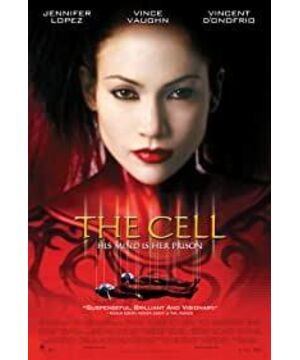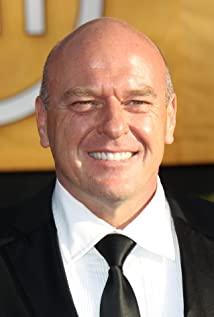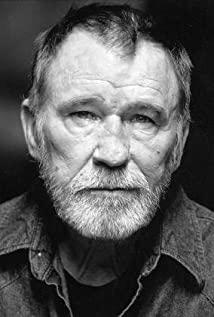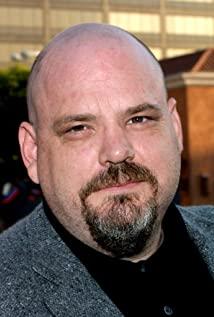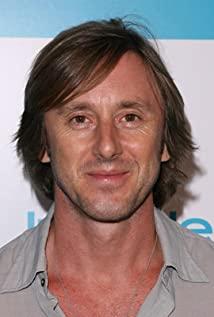I remember that the reason for watching this movie is a bit similar to a few plots in the movie. I saw this movie on a DVD player when I was very young, but I can only remember some things that I found difficult to understand and abbreviated at the time. Horror scenes, such as the heroine Katherine walking in the desert in white clothes, and the disgusting appearance of Carl with two black horns (or two braids). Understand what this movie is about, and now it seems that the very gorgeous and artistic style and Freudian plot design are just confusing. Anyone with a little bit of reading will not find this film difficult to understand. In essence, it is still a typical Hollywood movie. The film tells that the police caught the murderer Carl in the investigation of a serial murder case. He specially picked those sweet and lovely women to start, and then tortured them to death with very cruel means, but before he was arrested, The last victim, Julie, was locked in the water tank by him. After more than 40 hours, she would be drowned by the timing water device. However, when police found Carl, he was already in a coma due to illness. In order to find Julie's whereabouts, the police had to find a way to "enter" Carl's consciousness to find the answer, so they found the "Campbell Center", a cutting-edge institution that allows doctors to enter patients' dreams for psychotherapy. The heroine of the film, Katherine, is a very experienced pediatrician. At that time, she was treating a little boy with autism, Edward, when she suddenly received such a task. She felt that there was little hope at first. FBI agent Peter Reluctant to let go of any slim hope, Katherine was finally persuaded to take part in the task. However, the film does not follow the above-mentioned story sequence. From the very beginning, we were taken into Edward's inner world. It was a desert, with steaming waves swaying in the picture. As far as we could see, there were only yellow sand, dry tree plants and a despairing blue sky. In the distant view, Catherine is wearing white clothes and riding a horse in the desert. Although it is only the size of a bean, it can still attract our attention. This passage uses a picture to interpret the heart of a loner as a desert. There seems to be no one or any life in Edward's world except the monster Mokylok, who frightened him. Catherine tried to approach him, communicate with him, and invite He traveled by boat, Edward was finally scared away, and Catherine had to press the button on her hand to terminate the experiment. The opening scene of the film is gorgeous and stunning, but it feels confused at first. Catherine's dress and the desert in which she lives do not seem to be part of our daily experience , we have to wait until Catherine wakes up from the dream to realize that all this is not reality, at least not the reality we are familiar with. The difference between the two is as shown in the image space, a strange and unfamiliar one, which reminds people of Nolan's "Inception", the world in dreams is always beyond people's imagination, and the real world we have long been accustomed to. . However, this is only the tip of the iceberg of the film. Some people commented on IMBD that a scene like this is even longer than the dialogue of the characters. This sentence is not exaggerated. When it is shown in the middle and latter parts of the film, the narrative is completely transferred to the protagonist. In the dream world, all kinds of bizarre and coquettish image shapes constantly stimulate the audience's eyeballs, like a colorful kaleidoscope world, and rescue operations are imminent. So should we accuse this film of overshadowing its narrative content for its pursuit of visual form? Of course, there is a reason to do this, because for people who like to read stories, these pictures that are about to overflow their vision are too empty. Such an inner space, as well as those bloody and nauseating installations, seem to have no other effect except to stimulate the audience's eyeballs. This is a veritable visual feast, and Hollywood especially likes this kind of routine. Of course, it's easy to make such accusations, but it often overlooks the fact that for fans of the visual arts, the film is a huge boon. Here we have to mention director Tasim Sim, who made a name for himself in commercials and music videos earlier. In 1991, he won several awards for the music video for REM's song "Losing My Religion". And "Invasion of Brain Cells" is his film debut. It is not easy to transform into a film director, because the film's length, narrative method, and audience are very different from MVs and advertisements, so more factors have to be considered. . However, for Tasim, applying the aesthetic style of the MV to the film is an optional shortcut: pay attention to the shape and composition of the picture and the image design of the characters, try to use the visual content to explain the information of the plot, and let the picture instead of the dialogue. It is not easy to do this in the minds of the audience, which may be the reason why I still have an impression of this movie after decades. The MV for the band's song "Losing My Religion" won several awards. And "Invasion of Brain Cells" is his film debut. It is not easy to transform into a film director, because the film's length, narrative method, and audience are very different from MVs and advertisements, so more factors have to be considered. . However, for Tasim, applying the aesthetic style of the MV to the film is an optional shortcut: pay attention to the shape and composition of the picture and the image design of the characters, try to use the visual content to explain the information of the plot, and let the picture instead of the dialogue. It is not easy to do this in the minds of the audience, which may be the reason why I still have an impression of this movie after decades.
And for this kind of unreal dreamland, illusory space or human consciousness world, the potential of modeling narrative can be better utilized, because these spaces do not exist objectively, and no one knows what they should look like. At this time, the director These spaces must be created according to their own ideas and concepts. Why is the recently re-screened "Avatar" so popular? Of course, it's not because of some ridiculous environmental theme, but the alien life forms and their planets in the movie satisfy people's beautiful imagination. Everything becomes more realistic, and at the same time it will make people feel incredible, constantly being shocked by the picture in a kind of unfamiliar viewing, which is the magic weapon for all Hollywood blockbusters. "Invasion of Brain Cells" is more like a horror movie, brutal murder, Carl's destruction of his own body (the hook is put into the skin of the back, and then the body is hung up, the scene of separation of the skin and flesh is very uncomfortable), There are also those bloody scenes, where Carl was beaten by his father as a child, and filled with a lot of violence, but in fact, all this did not break away from the requirements of the plot. Because for Carl, his life was originally a nightmare. He was ill since he was a child, and his father was not mentally normal. He lived a day of fear and fear every day. Naturally, it is impossible for us to find much sunshine or warmth in his dreams. There is only death, devils, corpses, and self pretending to be very powerful. In the end, Catherine had to change her strategy and let Carl enter her world, which was a peach blossom world. Catherine gently soothed the frightened childhood Karl like a Virgin, and when the grown-up monster Karl appeared, she was very confident To stand up and fight against it, because for her, this world is her world, and here, she is extremely powerful. Julie was rescued not long after, and much of the credit goes to Peter for finding the key clues in Carl's dream. But for Katherine, her mission is to save Carl as a child, even though all this has no meaning for the immediate reality. She had lost her younger brother and could understand how painful it is when a person is tortured. Perhaps there are too many directors to thank Freud. His dream theory and childhood theory have provided a lot of inspiration for movies. More and more psychoanalytic movies are emerging on the screen, and crime movies have long been familiar with this. . Carl's motive for murder was explained as the distortion of his personality after he suffered heavy physical and mental damage in his childhood, as well as the death of Catherine's younger brother, the disaster caused by Peter's work mistakes to the victim's family, and finally became the depression in their hearts, and even changed. their lives. But the film doesn't use Freud's explanation to get me Our sympathy for the murderer Carl, as Peter said, even if someone is hurt a hundred times more than Carl, this person can still be a normal person who doesn't hurt others. It's that childhood Carl that we really sympathize with, and it's the moment that really hurts when we see how his father abused him like a beast through Catherine's eyes. The ending of the movie is happy, Catherine comes to Edward's dream again, this time, she becomes more confident and more powerful than before, this power comes from her determination as a doctor to save patients, but also to protect The power of motherhood that gradually emerged in Carl's childhood. What is interesting is that the ending of the film takes place in a dream world. Edward's spiritual desert can finally set sail like a sea, so will it be the same in reality? Does this ending imply that some diseases in life can only be Get therapy in a movie?
(This article was first published on the public account: Sleeping Ear Movie)
View more about The Cell reviews


